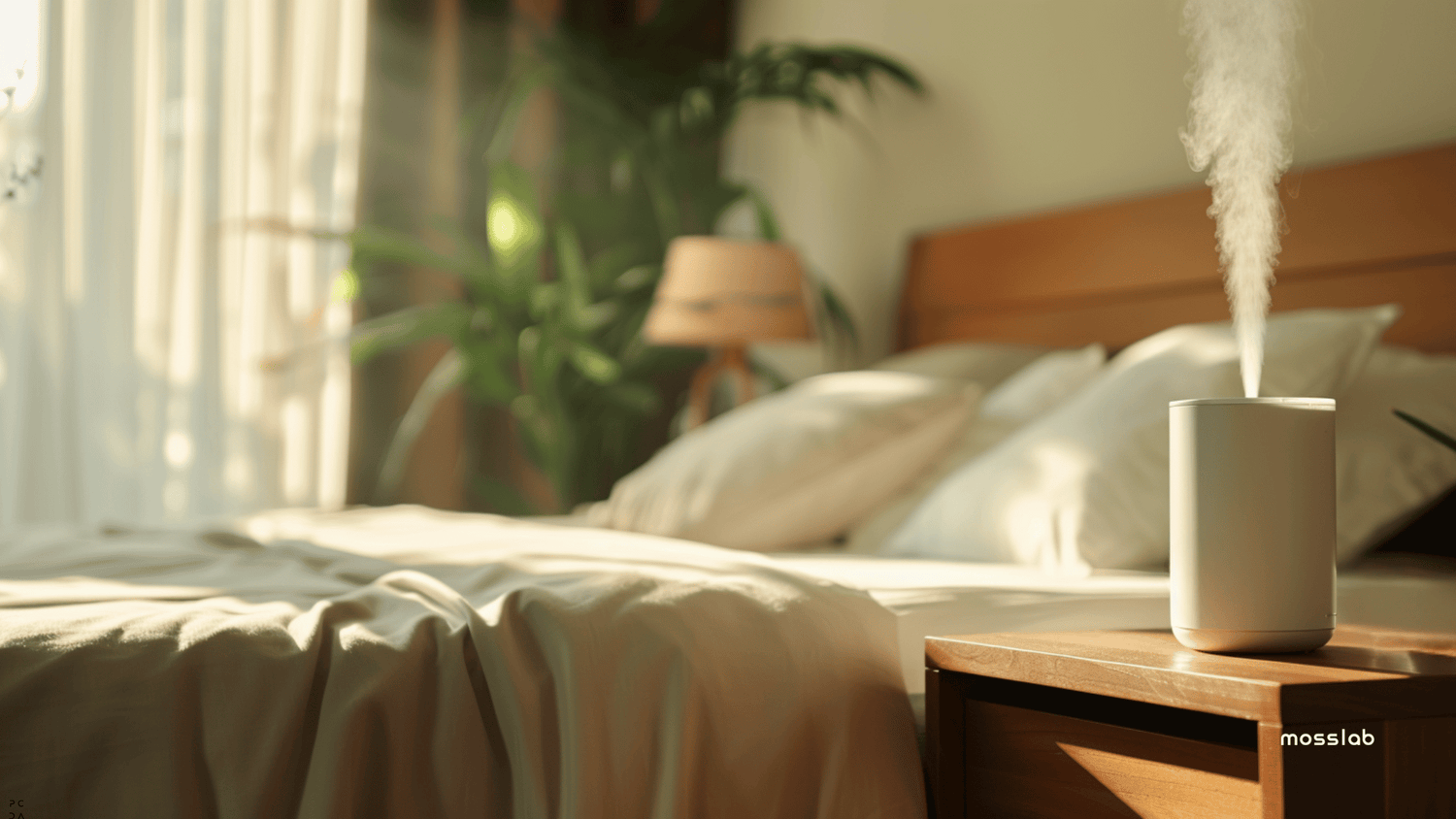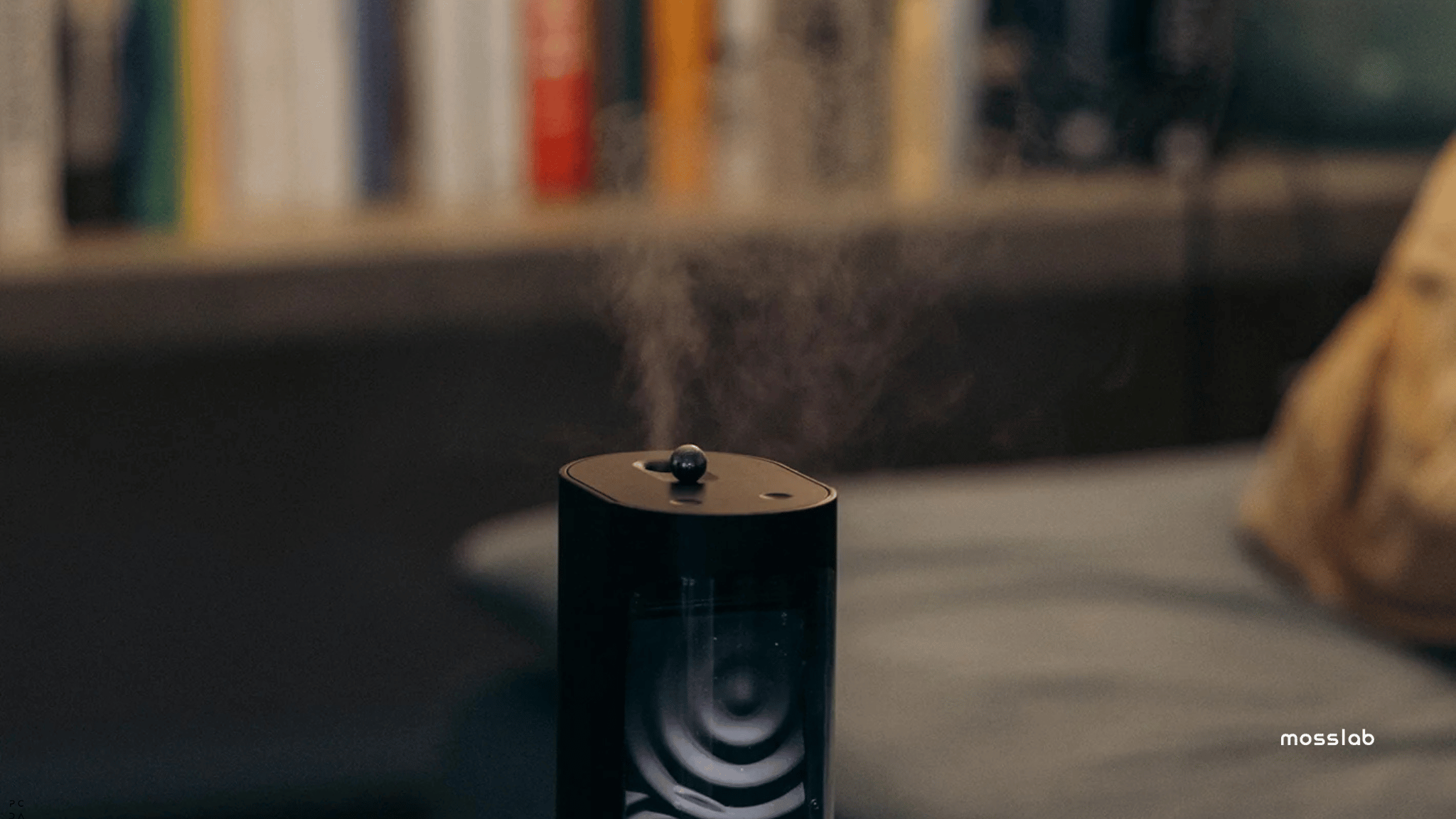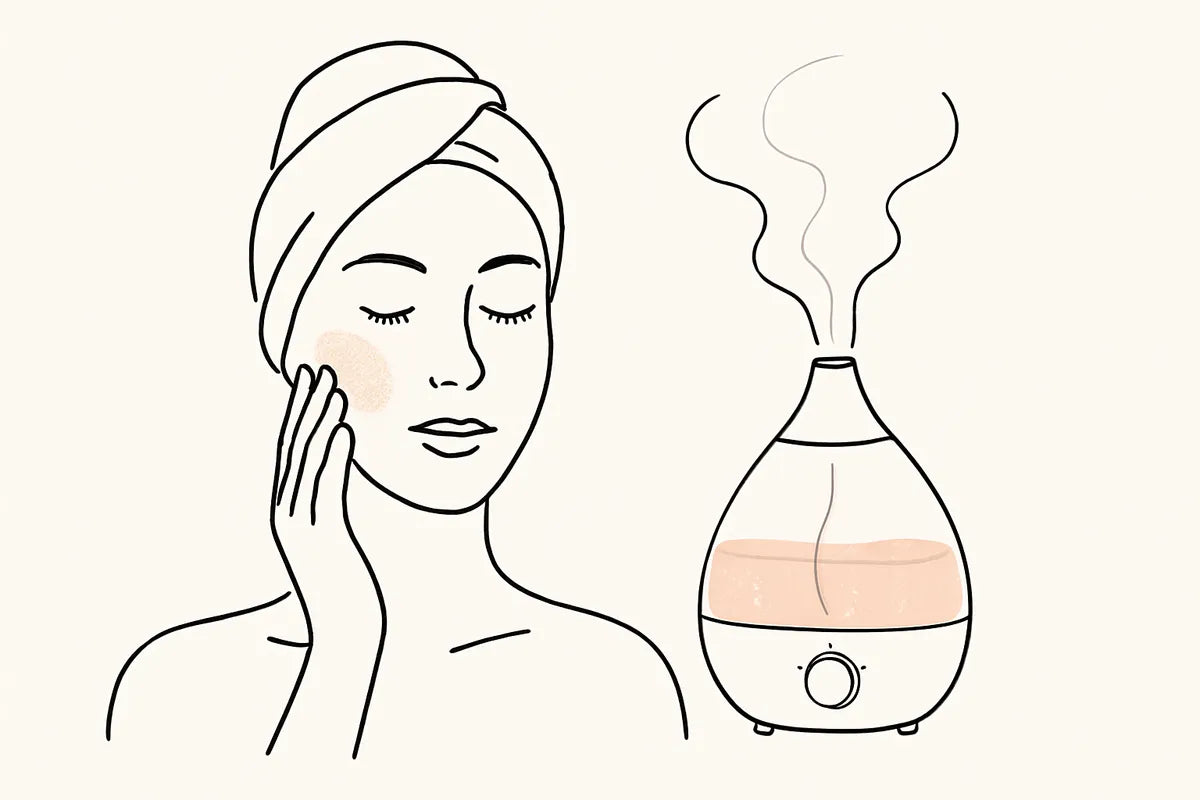Imagine breathing easier in your own home—sounds appealing, right? A humidifier might be just what you need to transform dry indoor air into a more comfortable, health-friendly environment. From easing respiratory issues to protecting wooden furniture, these devices offer a range of benefits. But are you using the right type? And how do you guarantee it's working effectively? Let's explore what makes humidifiers a must-have in many households.
Key Understandings

- Humidifiers increase indoor moisture levels, improving air quality and comfort.
- They alleviate dry skin and respiratory conditions by maintaining ideal humidity levels.
- Humidifiers help reduce the spread of airborne viruses and respiratory infections.
- Regular cleaning and maintenance prevent mold and bacteria growth in humidifiers.
- Using distilled water minimizes mineral buildup and extends humidifier lifespan.
Understanding Humidifiers and Their Purpose

Humidifiers play an essential role in creating a comfortable indoor environment by increasing the moisture level in the air. They're particularly beneficial during winter when heating systems dry out the air, negatively impacting your health. By maintaining ideal humidity levels between 30% and 50%, humidifiers can greatly improve air quality and offer numerous health benefits. These devices help alleviate dry skin, ease respiratory conditions, and reduce the spread of airborne viruses, enhancing your overall well-being.
To maximize the benefits of humidifiers, regular cleaning is vital. It prevents mold and bacteria growth, which could otherwise worsen respiratory issues. Different types of humidifiers, like ultrasonic and evaporative models, cater to various preferences but all aim to boost moisture levels effectively. By understanding their purpose and maintaining them properly, you can guarantee they function efficiently, creating a healthier and more pleasant living environment for you and your family.
Different Types of Humidifiers and Their Features

Exploring the various types of humidifiers and their features can help you choose the best option for your needs. Central humidifiers are integrated into HVAC systems, providing whole-house air humidification, perfect for maintaining balanced humidity levels in larger spaces. If you're looking for a quieter option, ultrasonic humidifiers use high-frequency sound waves to create a cool mist, making them energy-efficient as well. Evaporative humidifiers use a wet wick or filter to blow air through, self-humidifying by naturally regulating humidity levels, ensuring you won't over-saturate your space. Steam vaporizers boil water to produce steam, but they pose a burn risk, so they're not suitable for households with children. Impeller humidifiers are another safe choice for families, as they use a rotating disk to fling water into the air, creating a cool mist. Consider these features to determine which humidifier best meets your air humidification needs.
Health Benefits of Using a Humidifier
Enhancing your home's humidity can offer significant health benefits. Using a humidifier adds moisture to the air, which can greatly improve air quality and alleviate various health issues. By maintaining ideal humidity levels, a humidifier helps relieve dry skin and irritated sinuses, especially during dry winter months or when air conditioning is in use. You might notice a reduction in respiratory symptoms and allergy symptoms, as proper humidity eases irritation in your mucous membranes and reduces indoor allergens like mold.
Moreover, humidifiers can:
- Improve sleep quality by reducing congestion and snoring.
- Assist in asthma management by keeping airways moist, preventing dryness that can trigger attacks.
- Reduce the spread of respiratory infections with humidity levels above 40%, shown to deactivate influenza virus particles.
- Ease allergy symptoms by preventing irritation and promoting a more comfortable breathing environment.
Investing in a humidifier can transform your home into a healthier, more comfortable space.
The Importance of Maintaining Ideal Humidity Levels
To truly maximize the health benefits of a humidifier, it's important to focus on maintaining ideal humidity levels in your home. Keeping indoor humidity between 30% and 50% can prevent dry skin, irritated sinuses, and respiratory issues that often accompany low humidity. Humidifiers help you achieve these ideal levels, ensuring comfort and health by alleviating symptoms like sore throats and dry coughs. However, it's equally important to prevent humidity from getting too high, as this can encourage the growth of allergens such as mold and dust mites, potentially worsening asthma and allergy symptoms.
You should regularly monitor humidity to maintain a healthy environment. This proactive approach helps you adjust levels as needed, optimizing the benefits of your humidifier while preventing the adverse effects of both low and high humidity. By focusing on maintaining indoor humidity, you create a welcoming and healthy space for you and your family.
How to Measure and Monitor Humidity in Your Home
Ever wondered how to keep your home's humidity at just the right level? Measuring and monitoring indoor humidity is vital for maintaining ideal comfort and preventing issues like respiratory discomfort and skin issues. To get started, use a hygrometer. It's a handy device that measures the moisture in the air and should read between 30% and 50%.
- Choose a digital hygrometer: These provide accurate, real-time readings and often include features like temperature displays and memory functions.
- Regularly check humidity levels: This is important, especially during seasonal changes or when using heating and cooling systems that can affect indoor humidity.
- Place the hygrometer wisely: Avoid windows, doors, and air vents to guarantee accurate readings, as these areas might have fluctuating humidity due to drafts or sunlight.
- Monitor for mold growth: High humidity can foster mold, so maintaining balance is key.
Potential Health Risks of Using a Humidifier Incorrectly
Although humidifiers can greatly improve your living environment, using them incorrectly might pose several health risks. Humidifiers can cause excessive humidity levels, which encourage mold growth and exacerbate respiratory issues such as asthma and allergies. This can lead to significant health problems and worsen indoor air quality.
Dirty humidifiers are another concern as they can disperse bacteria and mold spores into the air, leading to flu-like symptoms and respiratory infections. It's important to keep your humidifier clean to avoid these issues. Furthermore, using tap water instead of distilled water can cause mineral buildup, releasing harmful particles that you might inhale.
If you're using steam vaporizers, there's a burn risk, particularly around children, so supervision is vital. Additionally, overly humid environments can become a breeding ground for dust mites and other allergens, which can worsen allergies. Always monitor humidity levels to confirm they're within a healthy range.
The Role of Humidifiers in Managing Asthma and Allergies
When managing asthma and allergies, humidifiers play an essential role by adding moisture to the air, soothing irritated mucous membranes and reducing respiratory inflammation. By maintaining indoor humidity levels between 30% and 50%, you can prevent common allergens like dust mites and mold spores from thriving. This ideal moisture range not only improves air quality but also alleviates allergy symptoms and reduces asthma attacks triggered by dry air.
Regular use of humidifiers can enhance comfort for those with respiratory issues. Increased humidity can deactivate virus particles, potentially cutting down respiratory infections that make asthma and allergy symptoms worse.
Consider these benefits:
- Improved air quality: Helps you breathe easier by reducing dry air irritants.
- Enhanced comfort: Alleviates coughing, throat irritation, and bloody noses.
- Allergen control: Reduces the viability of dust mites and mold spores.
- Prevention of respiratory issues: Decreases the frequency and severity of asthma attacks.
Tips for Proper Humidifier Maintenance and Cleaning
Maintaining your humidifier properly is vital to guarantee it functions effectively and safely. Start by engaging in regular humidifier maintenance, which includes cleaning every three days with a 3% hydrogen peroxide solution. This helps prevent bacteria and mold growth. Always make certain to rinse thoroughly afterward to ascertain clean water. Opt for distilled water in your device to minimize mineral buildup and reduce harmful particles. Change the water daily to avoid stagnant water, which can lead to unwanted microorganisms.
Regularly inspect filters based on the manufacturer's guidelines; dirty filters can hinder performance and release contaminants. Monitoring humidity levels with a hygrometer is essential to make certain they remain between 30% and 50%. This range prevents excessive humidity, which can cause condensation and mold. By adhering to these tips and practicing proper cleaning, you'll maintain a healthier environment and extend the life of your humidifier.
Common Mistakes to Avoid When Using a Humidifier
While proper maintenance is key to keeping your humidifier in top shape, it's equally important to steer clear of common pitfalls that can undermine its benefits. Overlooking simple tasks can lead to issues that affect air quality and your health.
First, always clean your humidifier regularly to prevent mold and bacteria from contaminating the air. Using tap water instead of distilled or demineralized water can cause mineral buildup and release particles harmful to your lungs. It's crucial to monitor humidity levels to avoid over-humidifying, which fosters mold growth and damages your home. Don't forget about the filters; neglecting to clean or replace them can reduce your humidifier's efficiency.
Here are some mistakes to avoid:
- Skipping regular cleaning can lead to mold and bacteria buildup.
- Using tap water may release harmful particles.
- Ignoring humidity levels could cause mold growth.
- Neglecting filter maintenance reduces effectiveness.
Exploring Alternatives to Humidifiers for Adding Moisture to the Air
Why rely solely on humidifiers when there are plenty of natural alternatives to add moisture to the air? Saline nasal sprays offer relief by moisturizing dry nasal passages, while gargling with warm saltwater soothes your throat and adds moisture, combating dry air discomfort. A bulb syringe or neti pot with sterile saline solution is another effective way to clear your nasal passages, ensuring comfort and preventing irritation.
You can also increase humidity naturally by placing bowls of water near heat sources or draping wet towels around your space. As these evaporate, they release moisture into the air, enhancing comfort without needing a humidifier.
Don't forget about indoor plants—they're fantastic at boosting humidity. Plants release moisture through transpiration, contributing to a more comfortable and balanced indoor climate. These natural methods not only help with humidity but also create a healthier environment in your home.




